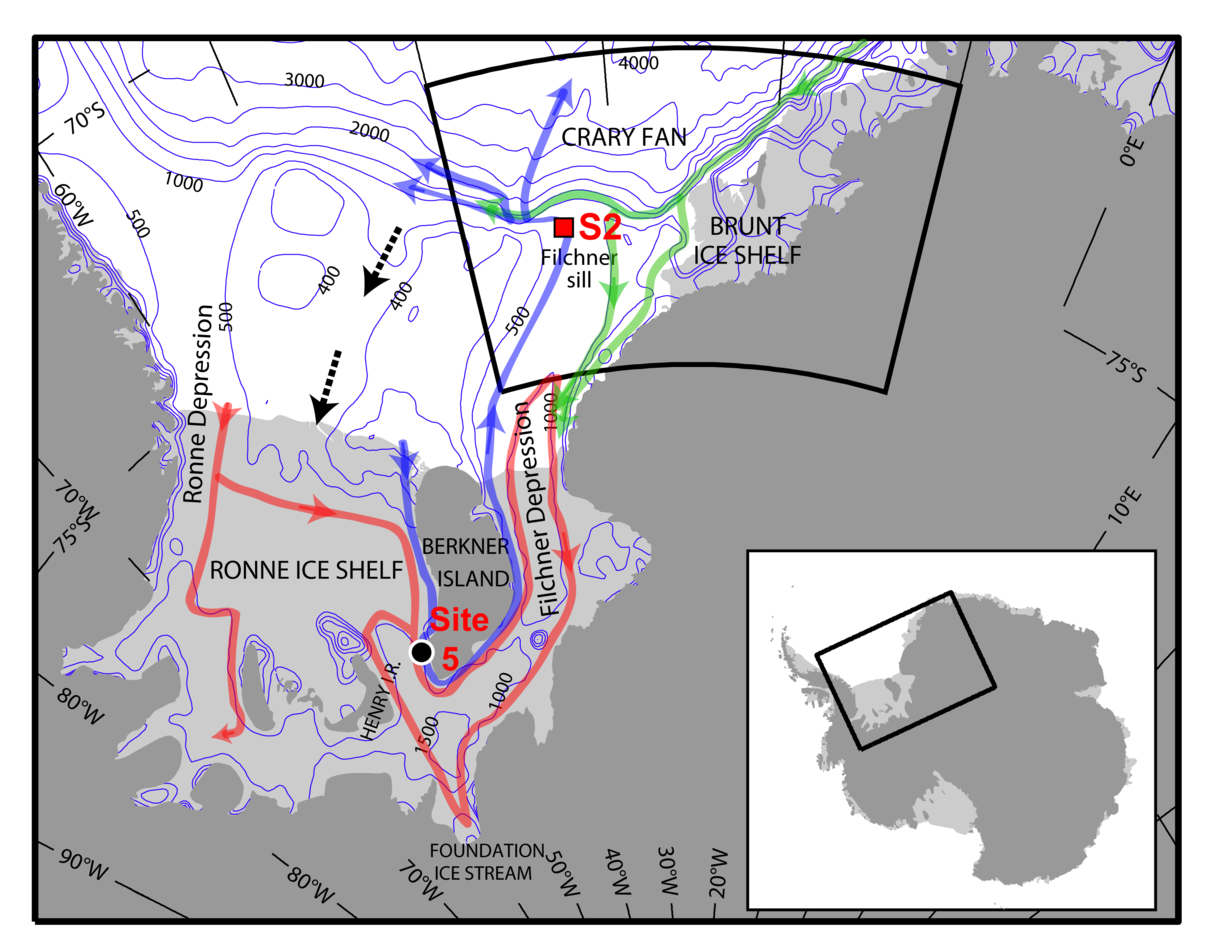WEDDELL
Antarctic Ice Shelves and Ocean Climate: Production, Export, Dynamics and Variability of Bottom Water in the Southern Weddell Sea

Main content
The overall objective of WEDDELL is to study the role of the Antarctic ice shelves in the climate system. WEDDELL joins unique national expertise from large scale ocean circulation, monitoring, ocean mixing and turbulence measurements, process-oriented modelling and Earth system modelling to deliver a more complete and detailed description of the processes that take place in the southern lower limb of the Atlantic thermohaline circulation.
Our approach is two-fold: i) use observations and process-oriented numerical simulations in concert to investigate bottom water production in the southern Weddell Sea, and ii) design sustainable long term observatories at key locations. The project will utilize the legacy of IPY project Bipolar Atlantic Thermohaline Circulation (BIAC), as well as historical NARE-legacy data. These data sets and new observations will be exploited together with process-oriented modelling to advance our understanding of the processes producing the deepest waters filling the abyss. New parameterizations will be explored for better representation of overflows in climate models, and will be implemented and tested in the Norwegian Earth System Model. The latter is our tool to investigate the consequences and performance of our findings in the large scale context. The specific objectives of this study are addressed in the following work packages.
WP1: Long term climate variations
WP2: Filchner overflow plume dynamics and mixing
WP3: Next generation sustainable long term observatories
In the figure of the Weddell sea areas shaded in light gray are ice shelves; dark gray areas are land (Antarctic ice cap). Circulation pattern is after Nicholls et al (2009). Branches of the Filchner overflow downstream of S2 are after Foldvik et al. [2004]. The green arrows show the flow of the slope front and coastal currents. Blue and red arrows show the circulation beneath of waters originating from the eastern and western ends of the Ronne Ice Shelf Front, respectively. Black broken arrows indicate the inflow of modified CDW.
Principal Investigator: Ilker Fer, Geophysical Institute, University of Bergen
Co-Principal Investigator: Elin Darelius, Geophysical Institute, University of Bergen
Funding: NFR, 4.8 MNOK
Duration: 2011- 2014
